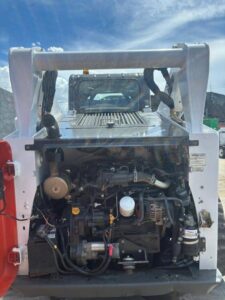
The Importance of Oil Changes for Your Bobcat Skid Steer
Oil changes for your Bobcat skid steer loader is essential for ensuring it operates efficiently and has a long lifespan.
Hialeah, Florida 33013
We're at your service
Online store always open
An air embolism occurs when air enters the bloodstream, which can happen if compressed air is blown directly onto the skin and finds a way into a cut or other opening. This air can travel through veins and arteries, eventually reaching critical areas such as the brain, heart, or lungs. Once there, it can block blood vessels, disrupting blood flow—an event that can result in severe organ damage or even sudden death.
The danger of an air embolism lies in its ability to obstruct the vascular system, where even a small amount of air can be harmful. In the heart, air can prevent the effective pumping of blood, leading to cardiac arrest. In the brain, it can cause a stroke, leading to long-term disability or death. The rapid onset of symptoms and the severity of potential outcomes make this a particularly alarming hazard of improper air compressor use.
Proper Training
It’s crucial for all personnel to receive thorough training on the correct operation of air compressors. Understanding the risks, particularly the potential for creating an air embolism, is essential for safe use.
Avoid Direct Contact
Compressed air should never be used to clean clothing or skin. This practice is dangerous and can be easily avoided by adhering to proper safety protocols.
Use Protective Gear
Wearing protective gear, including goggles and ear protection, is a simple practice that protects against the most common injuries associated with air compressors, such as eye injuries and hearing damage.
Routine Maintenance
Regular inspections can identify potential hazards with air compressors and their attachments, preventing malfunctions or accidents that could lead to dangerous exposures.
While indispensable in construction for their robust capabilities, air compressors must be handled with the utmost care to avoid severe injuries, particularly air embolisms. By understanding and respecting the power of these machines, and adhering to strict safety standards, construction workers can mitigate risks and maintain a safe working environment. IronPower Industries is committed to safety and ensure our practices reflect our responsibility to our co-workers and ourselves.


Oil changes for your Bobcat skid steer loader is essential for ensuring it operates efficiently and has a long lifespan.

🚧🔧 Attention Contractors! 🛠️🚜 Let’s dive into the world of skid steer controls and explore the diverse options available, including

Skid steers are like the Swiss Army knives of construction—super handy. However, figuring out whether to rent or buy comes

In a tiny village called Electronville, lived three busy characters: Watts, Volts, and Amps. Watts was the energetic kid, always